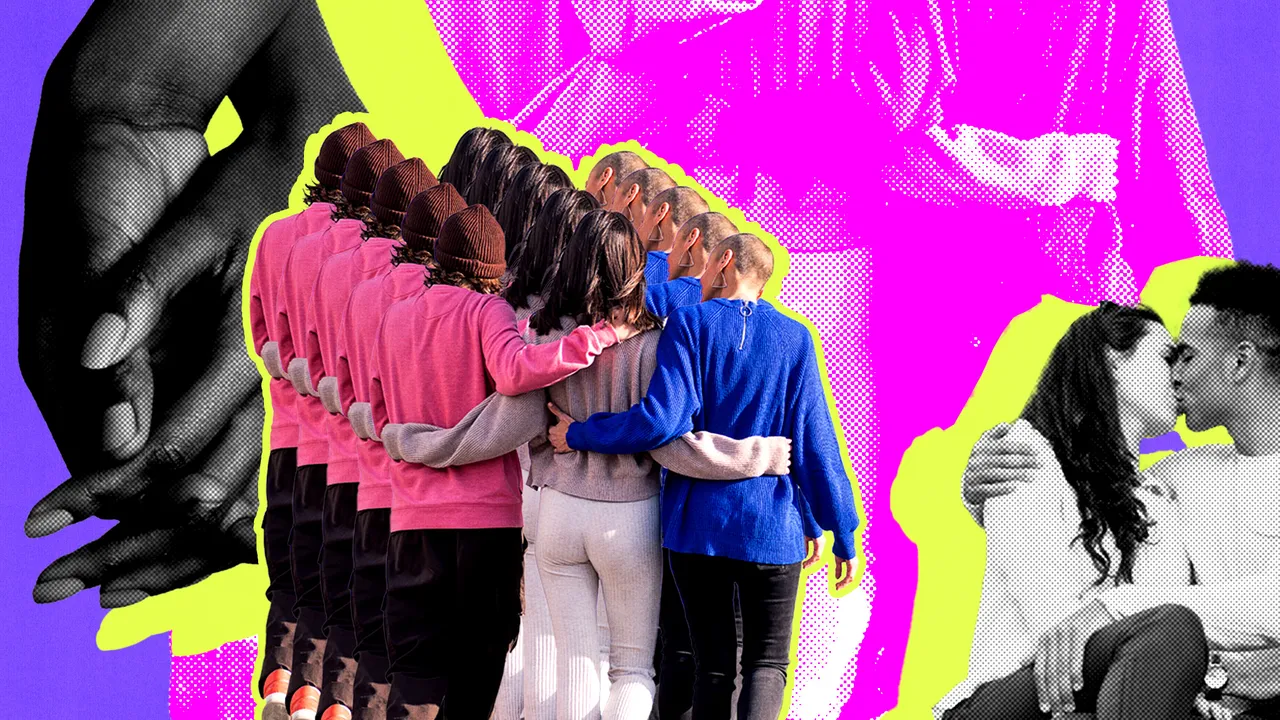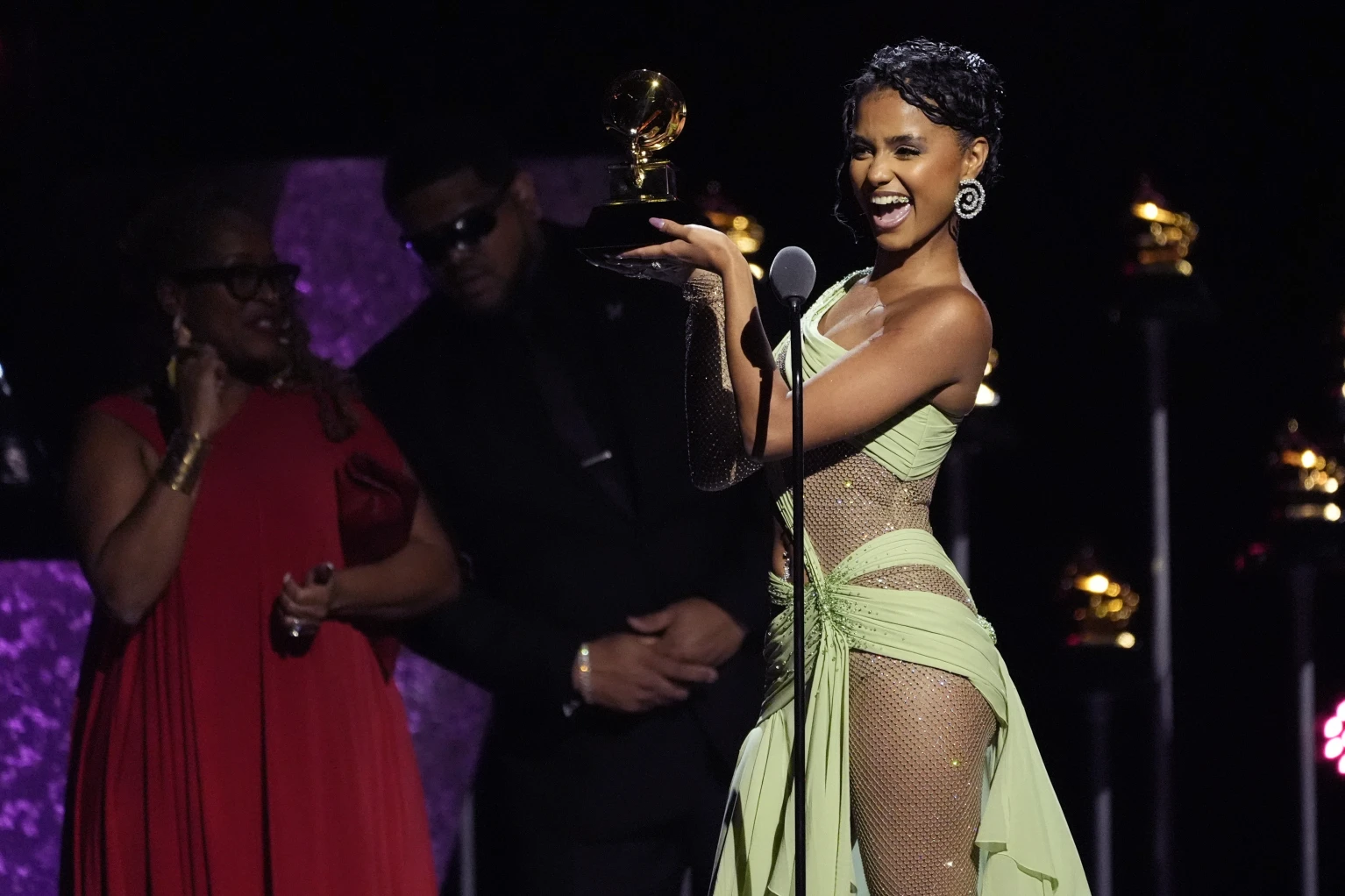
Ryan and Randy met at a sex party in 2019 and started dating shortly after. By month four, they made the relationship official, eventually moved into a two-story house in Los Angeles together, and did all the things happy couples do: date nights, vacation with friends, support one another’s ambitions.
Then, in 2022, they decided to open the relationship.
As Covid-19 restrictions loosened, “we were being exposed to other attractions and to other people who were seeking our attention,” Ryan says. “We both knew we had attractions to other people. We weren’t blind to that. It was, let’s talk about being open and see what that means for us. Because being open can mean different things to different people.”
They agreed on rules. Communication was prioritised and in instances when they saw people separately, there was always a discussion beforehand. On Jack’d, a gay hookup app, they searched for prospects – but it didn’t always play out as expected.
“Whenever I would say my partner and I are looking to have a threesome, it would be, ‘No, I’m not doing that.’ Maybe people realise what comes along with it and how emotions ultimately get involved,” says Ryan, who is 33 and works in education. “In my experience I found that a lot of people are actually opposed to hooking up with a couple. But when I would say ‘my homeboy and I are looking,’ people would be into it.”
Ryan and Randy identify as consensually non-monogamous, a term you’ve likely heard a lot in the past year, as discourse around modern relationships has taken hold of the zeitgeist. (Their names have been changed for employment concerns.) For reasons obvious and unforeseen, consensual or ethical non-monogamy is seemingly more popular than it’s ever been. The label works like an umbrella, incorporating the many relationship structures under it, including the one currently flooding every social media feed – polyamory.
Across pop culture, on dating apps and likely in your friend groups, there is a thickening curiosity around the variations unconventional romance can assume. “What are all these open couples, throuples and polycules suddenly doing in the culture, besides one another?” Jennifer Wilson asked in The New Yorker.
As it turns out, it’s not all about sex.
“Today [polyamory] IS just another form of self-expression,” says Noa Elan, CEO of Bloom Community, a queer-friendly app that caters to poly-identifying individuals.
What used to be thought of as counterculture is now par for the course. A 2024 Match survey found that 31 per cent of singles have had a non-monogamous relationship in their lifetime, and 39 per cent of online daters are open to dating a non-monogamous person they meet on a dating app. Perhaps unsurprisingly, 50 per cent of men are open to trying polyamorous dating, according to a recent trends report conducted by Flirtini.
Elan tells me she found non-monogamy in her early thirties during a period she refers to as her “fall of rage.” It was 2018. She had a successful career working in a director role at Lyft. She had friends and was a mother of two. None of it mattered, because she was lonely. “I couldn’t tell anyone how I was feeling,” she says now. “I was sitting at my job like, ‘Is this life? Is this it?’ It put me on the path to find something beyond that – and that was nonmonogamy.”
“The realities of today’s world – where people can’t afford a home – will require us to be more flexible in how we think about relating. It’s about meeting the relationship where it is, instead of Hollywood telling you where it should be.”
Newly non-monogamous, Elan wanted to generate impact in her local community in a different way. This changed outlook was what brought her to Bloom. “Let’s be honest, dating apps suck,” she says. A recent survey of 500 Gen Z, millennial and Generation X adults found that nearly three-quarters of them had “experienced emotional fatigue or burnout” within the previous 12 months. And that’s if you can avoid the relentless – and unwanted – dick pics and messages, which a 2020 Pew Research study reported affected a third of its respondents.
Bloom provides a less transactional, more organic way to meet individuals who are also poly, gathering like-minded people around various event – say, a sound bath or a pottery class – in their respective city and letting connections sprout from there.
In the past six months, as visibility and dialogue around poly relationships permeated pop discourse, “we’re seeing an increase in all of our metrics,” Elan says. There was a significant spike in RSVPs to events on the app. On top of that, the types of offerings expanded. “Back in the day, a poly event would be sex-positive – play parties, dungeons, bondage workshops. Now it’s more – hiking, alternative parenting happy hour, movement classes. I’m seeing an increase in ‘regular’ events but with a twist for non-monogamous people.”
The dating climate is not what it was yesterday and who knows exactly what tomorrow will bring. Today, though, couples are exploring new dimensions with more of a liberated mindset, using social media to freely talk about what does and doesn’t work for them, and there is no shortage of apps that cater to their desires. Along with Bloom Community, there is Taimi, 3Fun, and #Open, all of which provide unique interpretations of what people are seeking in and from a poly life. Hinge introduced non-monogamous as a filter in its search function, and Feeld, one of the most in-demand apps for polyamorists, encourages members to bond over shared kinks and sexual expressions.
“It was different for our parents,” Elan says. “It was one job at a time. Then kids. Then travel the world. Today, that is not the reality. It’s ‘I want to both be a parent, have a career, do triathlons, and have an active sex life.’ This push for self-actualization is one of the drivers that allow nonmonogamy to really flourish.”
As nonmonogamy is normalised, so too are the difficulties that come along with it. “I did eventually see a decline,” Ryan says of his relationship with Randy. “Calling it open allows for the lines to be blurred a little bit. Dates with other men or spending the night over at someone’s house started occurring. We talked about what could and couldn’t happen. These were things we defined.”
The couple split in 2023. “There are risks involved,” he says now.
Increased awareness of polyamory can at times lead to harmful fetishising by those interested in non-monogamy. Unicorn hunting, for example. “We did see straight couples infiltrating queer spaces in search of bi women,” says Edward Reese, a community manager at Taimi. According to a report administered by the app last year, 73 per cent of bisexual women have been approached by couples looking for a third, despite only half of those women being familiar with the practice. Many leave the experience feeling exploited in some way.
It is why several people in the community use their platforms to inform outsiders and debunk myths about having multiple partners. Teasia Shine, 28, first started posting on TikTok for fun. Then, one day, she decided to divulge something she never had: details about the poly relationship she was in. “It had been my life for six years, so it was normal to me,” she says, not anticipating what would happen next. “But [the video] blew up. I got supporters out of nowhere.”
In the clip, from November 2022, Shine uses a popular line from The Player’s Club – the 1998 film about strippers trying to survive the nightmare of the American Dream – for sound. Jokingly, the caption exclaims: “When my sister caught me packing a bag to go with the couple I met at the party.” Shine says the amount of love she received in response was completely unanticipated. Comments ranged from “Crazy I see this on the internet but never met anyone willing” to “I’m down to pound …. but only on every other Monday.”
In the year since, the Chicago-based entrepreneur has shared dozens of videos to her 19,000 followers, intent on using her platform to educate people about what it’s actually like to be in a closed triad (meaning no outside partners). In one video, from December of that same year, Shine ranks the best apps for poly couples, with Hinge in the top spot.
“We have tried dating sites” but rarely for hookups, she says of her partners, who were already a couple when she met them at a party in 2016. “I always tell people in the poly lifestyle, whether you are a couple or solo, to go on the apps and make friends first and see where it goes after. Even though poly relationships are getting talked about more and more, it’s still intimidating to a lot of people.”
As pop discourse again reaches a tipping point, stigmas abound. Chief among them: polyamory is about, and will always be about, nothing more than sex. And although that may be the case for some people – after all, the body wants what the body wants – there are others focused on creating bonds beyond mere physical trysts.
That’s what it comes down to for Elan, and what she hopes apps like Bloom can continue to foster. “There’s so much more that non-monogamy will bring [into society],” she says about its future. “Maybe I parent with you. Or maybe I cohabitate with you, but it’s platonic. The realities of today’s world – where people can’t afford a home – will require us to be more flexible in how we think about relating. It’s about meeting the relationship where it is, instead of Hollywood telling you where it should be.”
- A Wired report











